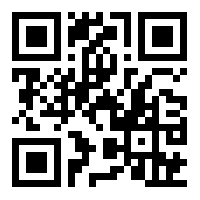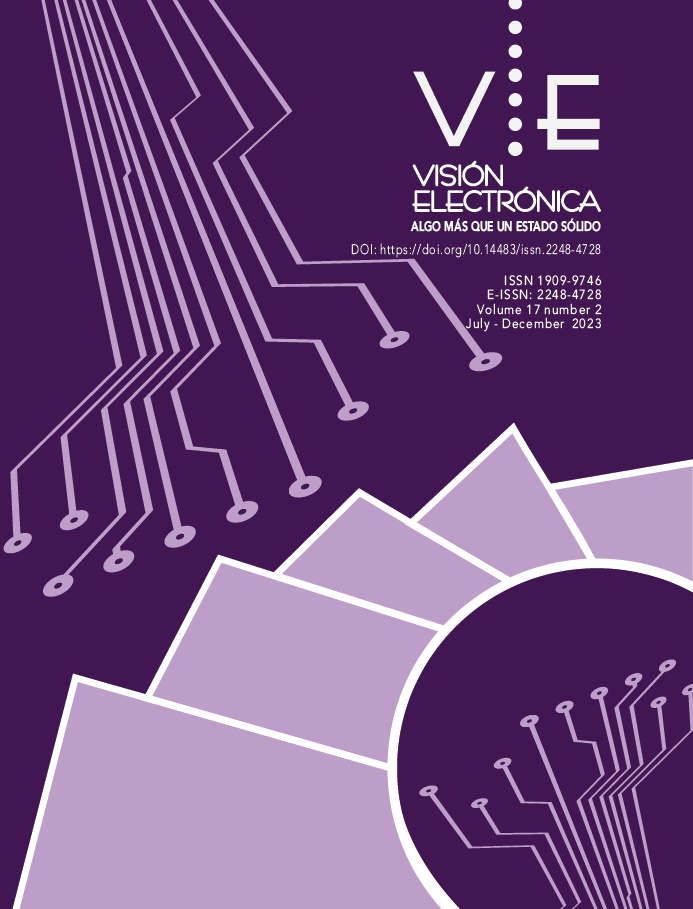Publicado:
2024-10-02Número:
Vol. 18 Núm. 2 (2024)Sección:
Visión de Ingeniería AplicadaReal-time Teleoperation of a Humanoid Robot (avatar) with the Motion Capture System Perception Neuron
Teleoperación en tiempo real de un robot humanoide (avatar) con el Sistema de Captura de Movimiento Perception Neuron
Palabras clave:
Motion capture, Perception Neuron, Socially assistive robotics, Humanoid robot, NAO robot, Teleoperation, ROS (en).Palabras clave:
Captura de movimiento, Perception Neuron, Robot de asistencia social, Robot humanoide, Robot NAO, Teleoperación, ROS (es).Descargas
Resumen (en)
This research describes a real-time teleoperation system for a NAO humanoid robot, visualized in a virtual environment, using an inertial motion capture system known commercially as Perception Neuron. To achieve this goal, the data captured by the MoCap system hardware is transmitted to the Axis Neuron software, where a model of the human skeleton will be automatically generated and each frame of movement will be captured, then all the captured data will be transmitted from this software to another computer with ROS, using a TCP/IP communication protocol, with insignificant latency. In Rviz (ROS - 3D visualization tool) the virtual model of the NAO robot will be observed. As a result, one-way teleoperation was achieved with an acceptable imitation of the movements performed by the non-technical operator. These routines involved different joint segments of the arms, legs and head. The results are promising to advance in the implementation and strengthening of this system with a therapeutic purpose, given that the NAO robot is considered a Social Assistance Robot, a recent field of study that is interested in the use of this and other robotic platforms in rehabilitation therapies.
Resumen (es)
En esta investigación se describe un sistema de teleoperación en tiempo real de un robot humanoide NAO, visualizado en un entorno virtual, utilizando un sistema de captura de movimiento inercial conocido comercialmente como Perception Neuron. Para alcanzar este objetivo, los datos capturados por el hardware del sistema MoCap son transmitidos al software Axis Neuron, donde se generará automáticamente un modelo del esqueleto humano y se capturará cada cuadro de movimiento, enseguida se transmitirán todos los datos capturados desde este software hasta otro computador con ROS, utilizando un protocolo de comunicación TCP/IP, con una latencia poco significativa. En Rviz (una herramienta de visualización 3D de ROS) se observará un modelo virtual del robot NAO. Como resultado, se logró una teleoperación unidireccional con una imitación aceptable de los movimientos realizados por un operador no-técnico. Estas rutinas involucraban diferentes segmentos articulares de los brazos, las piernas y la cabeza. Los resultados son prometedores para avanzar en la implementación y fortalecimiento de este sistema con un propósito terapéutico, dado que el robot NAO se considera un Robot de Asistencia Social, un campo de estudio reciente que se interesa por el uso de esta y otras plataformas robóticas en terapias de rehabilitación.
Referencias
L. Wing-Yue Geoffrey , M. Sharaf and N. Goldie, "Human-Robot Interaction for Rehabilitation Robots," in Robotic Assistive Technologies: Principles and Practice, Boca Raton, CRC Press, Taylor & Francis Group, 2017, pp. 26-27, 40.
C. Bodine, L. Sliker, M. Marquez, C. Clark, B. Burne and J. Sandstrum, "Social Assistive Robots for Children with Complex Disabilities," in Robotic Assitive Tecnologies: Principles and Practice, Boca Raton, CRC Press, Taylor & Francis Group, 2017, pp. 263, 295.
R. Baker, "Gait analysis methods in rehabilitation," J. Neuroeng. Rehabil., vol. 3, p. 4, 2006.
J. C. Pulido, C. Suárez-Mejías, J. C. González, A. Dueñas Ruiz, P. Ferrand Ferri, M. E. Martínez Sahuquillo, C. Echevarría Ruiz De Vargas, P. Infante-Cossio and C. L. Parra
Calderón, "A Socially Assistive Robotic Platform for Upper-Limb Rehabilitation," IEEE ROBOTICS & AUTOMATION MAGAZINE, pp. 24-39, 2019.
G. Emre Cemal, C. YuJung and K. ChangHwan , "Imitation of Human Upper-Body Motions by Humanoid Robots," 16th International Conference on Ubiquitous Robots (UR), p. 24, 2019.
K. Darvish, L. Penco, J. Ramos, R. Cisneros, J. Pratt, E. Yoshida, S. Ivaldi and D. Pucci, "Teleoperation of Humanoid Robots: A Survey," Computer Science, pp. 1-21, 202.
J. Valčík, Similarity Models for Human Motion Data, Brno: Masaryk University, 2016.
P. Kopniak, "Motion capture using multiple Kinect controllers," Przeglad. Elektrotechniczny, 91(8), pp. 26-29, 2015.
L. L. Gómez Echeverry, A. M. Jaramillo Henao, M. A. Ruiz Molina, S. . M. Velásquez Restrepo, C. A. Páramo Velásquez and G. J. Silva Bolívar, "Human motion capture and analysis systems: a systematic review," PROSPECTIVA Vol. 16 - No. 2, pp. 24-34, 2018.
N. Ltda., Axis Neuron User Guide.
A. M. Norjasween, F. A. khtar Hanapiah, R. A. Abdul Rahman and H. Yussof, "Emergence of Socially Assistive Robotics in Rehabilitation for Children with Cerebral Palsy: A Review," International Journal of Advanced Robotic Systems, pp. 1-7, 2016.
S. Fojt˚u, "Nao Localization and Navigation Based on Sparse 3D Point Cloud Reconstruction," CZECH TECHNICAL UNIVERSITY IN PRAGUE, Praga, 2011.
Aldebaran Robotics, "NAO Parts," Revista de Robots, 8 junio 2023. [Online]. Available: https://ii.tudelft.nl/naodoc/site_en/greendoc/getting_started/nao_parts.html.
University of Wisconsin-Madison, "Biovision BVH," 2023. [Online]. Available: https://research.cs.wisc.edu/graphics/Courses/cs-838-1999/Jeff/BVH.html.
B. Lutjens, "perc-neuron-ros-ur10," 2019. [Online]. Available: https://github.com/blutjens/perc_neuron_ros_ur10.
S. Haller, "perception-neuron-ros," 2017. [Online]. Available: https://github.com/smhaller/perception-neuron-ros.
O. Robotics, "Open Robotics," 2019. [Online]. Available: http://wiki.ros.org/nao.
C. Girard, D. Calderón de León, A. Arafat Lemus, V. Ferman and J. Fajardo, "A Motion Mapping System for Humanoids that Provides Immersive Teleprescence Experiences,"
Universidad Galileo, 2020.
B. M. Lütjens, "Real-Time Teleoperation of Industrial Robots with the Motion Capture System Perception Neuron," TECHNISCHE UNIVERSITÄT MÜNCHEN, Munich, 2017.
I. Almetwally and M. Mallem, "Real-time Tele-operation and Tele-walking of Humanoid Robot Nao using Kinect Depth Camera," IEEE, pp. 1-4, 2013.
C. Gu, L. Weicong, X. He, Z. Lei and Z. Mingming, "IMU-based motion capture system for rehabilitation applications: A systematic review," Biomimetic Intelligence and Robotics, vol. 3, no. 2, pp. 1-13, 2023.
Cómo citar
APA
ACM
ACS
ABNT
Chicago
Harvard
IEEE
MLA
Turabian
Vancouver
Descargar cita
Visitas
Descargas
Licencia
Derechos de autor 2024 Visión electrónica

Esta obra está bajo una licencia internacional Creative Commons Atribución-NoComercial 4.0.
.png)
atribución- no comercial 4.0 International






.jpg)





